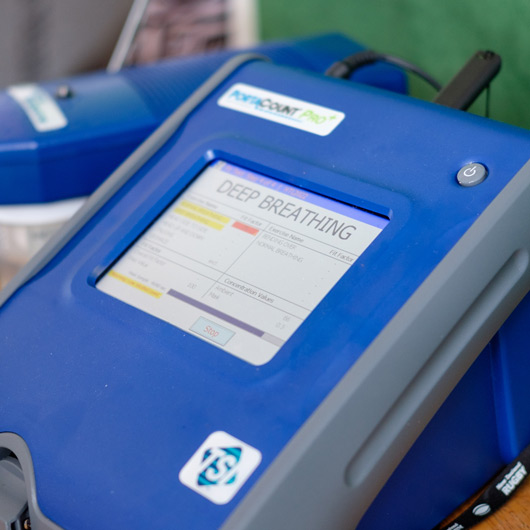Fit Testing
Fit testing – what you need to know
If you and your staff wear RPE face masks to protect against airborne hazards such as COVID-19, asbestos, chemicals, dust, and other dangerous materials, you need to have it correctly fitted.
Fit testing is done to evaluate the fit of your mask and ensure that a good seal is achieved around all edges and that there are no gaps between the particulate respirator and face. A respirator will not provide protection if it is not fitted correctly.
If your employees are mandated to wear a mask within their workplace, then you have a responsibility under the Australian New Zealand Health and Safety Standard AS/NZS1715 to ensure you’ve taken all possible steps toward protecting their health and safety. That includes ensuring their respirator mask is providing maximum protection.
But without quantitative fit testing, the chances are their mask is not providing that protection.
Those with small faces, flat-shaped noses, beards, and facial hair are particularly at risk of wearing an ill-fitting mask and being at risk of exposure to contaminants.
Traditionally 90% of respiratory half masks sold in New Zealand are medium size. Recent statistics show that 48% of people fit tested were medium size, while 52% were tested as large or small.
When to do fit testing
Fit testing should be done before a different size, style or brand of mask is used, and at least annually thereafter.

The test takes less than 3 minutes and is simple and non-invasive. After donning their mask, we attached our testing machine and ask the wearer to undertake a few simple activities including:
- Normal breathing
- Deep breathing
- Head movements
- Talking
- Body movements such as bending over
Once your mask has been fit-tested, we’ll also show you how to fit ‘check’ your mask each time you put it on, and how to correctly put on and remove your mask.
Types of fit testing
There are two methods of performing a fit test:

1. Qualitative Fit Testing (QLFT)
A QLFT involves using your sense of taste or smell to detect a bitter or sweet aerosol through the mask. Because the test is subjective and relies on the individual’s senses, it’s not recommended as a conclusive test.
This method of fit testing is less common, especially given the implications of the current global pandemic.

2. Quantitative Fit Testing (QNFT)
Used to fit-test any tight-fitting respirator, this type of test requires specialist equipment, as used by Fityaface. The equipment precisely measures the leakage around the face seal and produces a number known as a ‘fit factor’, eliminating any guess work.
A fit factor of at least 100 is required for half-mask respirators and a minimum fit factor of 500 or 1000 for a full facepiece negative-pressure respirator, depending on the protection factor required in use.
Unlike the QLFT, which is limited to a fit factor of 100, Fityaface’s QNFT technology is very sensitive and capable of measuring fit factors of 10,000 or higher, making it suitable for fit testing any type of tight-fitting respirator.
Do you have more questions about fit testing? Get the answers on our Fit Testing FAQ page.

